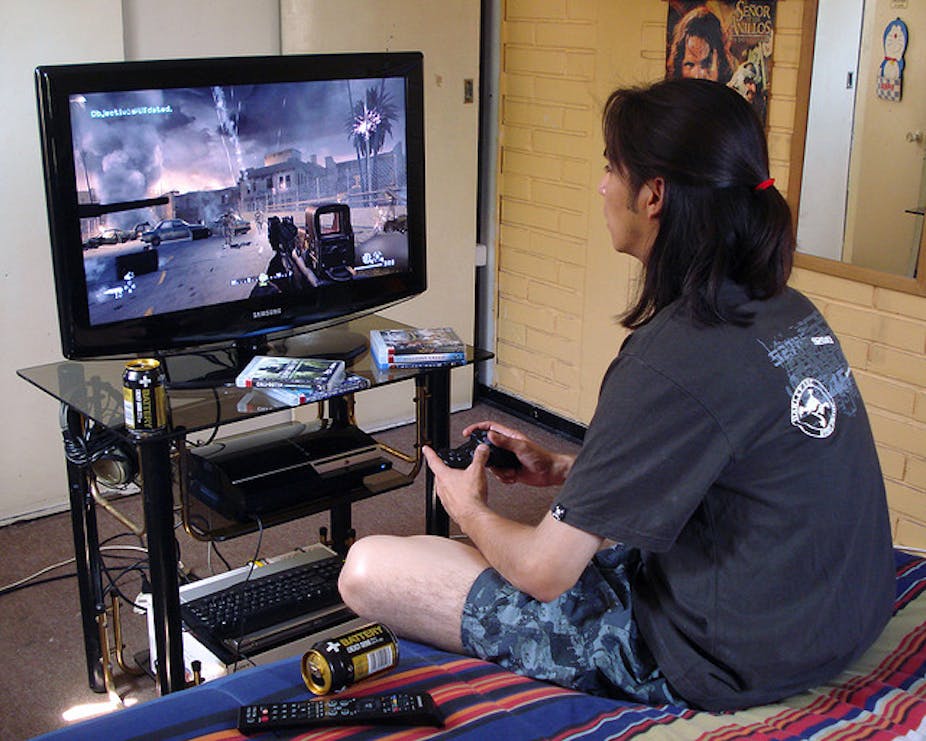If you are in any way exposed to computer games on a regular basis, it won’t have escaped your attention that Australia does not have an R18+ classification for video games.
This is particularly strange when you consider films and DVDs can be rated anywhere from “G” to “R18+”. The highest rating a video game can attract is MA15+ (suitable for players of 15 years old and above).
Video games classified as “adults only” elsewhere in the world – such as Grand Theft Auto IV – either sneak in as MA15+ or are refused classification entirely: banned from sale or distribution.
A broken system
Our classification system has failed the children of Australia. It tells them that curb-stomping, gut-mashing horrors (such as Gears of War 3) are all fine under the MA15+ category and encourages them to seek out unreleased games through illegal means (using BitTorrent.
Our classification system has failed adult Australians (in the sense they can’t get hold of games they might otherwise buy) by being one of the most restrictive classification schemes for games in the Western world.
Driving for change
For the last year, a concentrated push has occurred to get the classification laws changed through the various Attorneys-General around the country.
Popular support for the change is absurdly high – 80-90% in six separate large sample studies in that time.
Yet, sadly, the same old arguments for the failed censorship system appear time and again by pro-censorship advocates.
One such advocate, Barbara Biggins, CEO of the Australian Council on Children and the Media, wrote a piece recently accusing the pro-R18+ lobby of manipulating public opinion on the issue.
Her point was that where previously pro-R18+ advocates made the case for adult freedoms, they were now pushing the case that the R18+ would protect children. This subtle shift of tactic, she asserted, was a manipulation of the facts for political purposes.
I don’t blame Biggins or hold her position in any great contempt. It’s a very familiar set of arguments from a very familiar debate. In fact, it’s the position that’s brought us to where we are.
A web of violence
Thanks to the internet, children and young adults now have near-unlimited access to hyper-violent media including games, pornography and recipes for all manner of mischief.
But games need to be viewed in some kind of context. A young adult of 15 who can film fights in the playground and upload them to YouTube is not going to be protected psychologically by missing out on a banned Mortal Kombat game. Nor are they going to leap into a whirlpool of violence as a result of witnessing the fight.
Media evolution
We know a lot more about how violence in media works than we did 20 years ago: playing violent video games does not create a functional difference in empathy in players – witnessing violence does.
When longitudinal studies are done on video-game violence they are often conducted as paid research with pre-determined outcomes, and are deeply flawed and ideological.
The power of controversy
We have a situation now where many games are designed to be controversial – in order to help sales – and violence is becoming a standard of pride.
The longer such controversial games are being created, the more the most violent and gruesome of these gain cultural power.
And given how capable young adults are of finding games through illegal means, continued video-game censorship is a generational timebomb.
What’s your view on video-game classification in Australia? Leave your comments below. Do you conduct research in this area? Contact pitch@theconversation.edu.au

